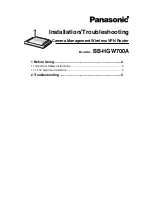
52
Figure 26
RPT building at the multicast source side
As shown in
, the process for building a source-side RPT is relatively simple:
4.
When a multicast source sends multicast packets to multicast group G, the DF in each network
segment unconditionally forwards the packets to the RP.
5.
The routers along the path from the source's directly connected router to the RP form an RPT branch.
Each router on this branch adds a (*, G) entry to its forwarding table. The * means any multicast
source.
After a bidirectional RPT is built, multicast traffic is forwarded along the source-side RPT and receiver-side
RPT from sources to receivers.
If a receiver and a multicast source are at the same side of the RP, the source-side RPT and the
receiver-side RPT might meet at a node before reaching the RP. The multicast packets that the multicast
source sends to the receiver are directly forwarded by the node to the receiver, instead of by the RP.
Administrative scoping overview
Typically, a PIM-SM domain or BIDIR-PIM domain contains only one BSR. The BSR advertises RP-set
information within the entire PIM-SM domain or BIDIR-PIM domain. The information for all multicast
groups is forwarded within the network scope that the BSR administers. This is called the "non-scoped
BSR mechanism."
To implement refined management, you can divide a PIM-SM domain or BIDIR-PIM domain into one
global-scoped zone and multiple administratively scoped zones (admin-scoped zones). This is called the
"administrative scoping mechanism."
The administrative scoping mechanism effectively releases stress on the management in a single-BSR
domain and enables provision of zone-specific services through private group addresses.
Admin-scoped zones are divided to specific multicast groups. Zone border routers (ZBRs) form the
boundary of the admin-scoped zone. Each admin-scoped zone maintains one BSR, which serves
multicast groups within a specific range. Multicast protocol packets, such as assert messages and
bootstrap messages, for a specific group range cannot cross the admin-scoped zone boundary.
















































